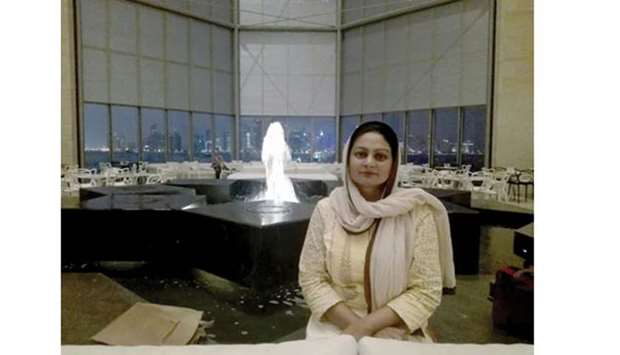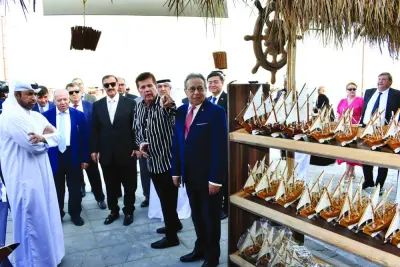Siddiqui’s PhD dissertation was on the comparative study of Vastu Shastra and Islamic architecture in a modern context, which she did from Nepal Sanskrit University. She now teaches at different engineering colleges as a visiting faculty member. Siddiqui has set up a not-for-profit organisation – The Mother Foundation – that stresses on the need of cultural diplomacy for the development of Nepal.
Siddique recently visited Qatar to attend discussions on cultural relationship between Nepal and Qatar. Community caught up with Siddique and talked to her about various dimensions of her academic interests including her recent visit to Qatar.
How do you look at Arabic and Qatari architecture?
Architecture mirrors society – it reflects the economic, ecological and cultural times. The heritage of traditional Islamic architecture including desert architecture prevails in multiple shapes and sizes and is in response to climate and specificity of local cultural and religious environment. Traditional structures were built with considerations like security and shelter.
Every architectural design in the Islamic Arab world offers solutions to the problems faced by the people. Desert architecture is an answer to climatic hurdles people have to face. Arabic architecture balances concerns of privacy and openness.
When we talk about Qatari tradition, its architecture is based on solidity, simplicity and passive designing. Housing units are divided into majlis, living, main core, services and bedrooms. They are structured in a way to reduce heat and to reflect Islamic cultural values, which focuses largely on internal courtyards.
How do you compare Nepali architecture with Arabic and Qatari architecture?
Such a comparison entails an analysis of similarities and differences in climatic, religious and traditional dimensions of the spaces. Nepal is a Hindu-dominated country, so it is saturated with temples that are generally multi-storied pagodas. Other structures are Buddhist monasteries, palaces, forts, ponds, roadside resting places and stone tapes, among others.
In Qatar, people follow Islam. Hence, Qataris build structures in an Islamic style. The principal architectural designs are mosques, tombs, palaces and forts. Buildings are inclusive of public baths and fountains. Calligraphy is the artistic expression of the Islamic world, so it takes centre stage in architecture here.
What do you think of the blending of modern and traditional architectural styles in the two countries?
In my view, blending modern and traditional styles is the necessity of this century. We need to adopt modern facilities with a traditional touch. A fascinating range of buildings in Nepal and Qatar are a sort of amalgamation of the two styles. Katara Cultural Village in Qatar is a unique example where we come across such a blending of styles.
As a scholar of architecture, you had an opportunity to study Nepali architecture. Did you see any Arabic influence on Nepal’s traditional architecture?
I see Islamic influence in three durbar squares – Kathmandu, Bhaktapur and Patan. We have come across Persian script in old coins and in one stone pillar at Kathmandu Durbar Square. Mughal architectural form is best reflected in Janaki Temple in south of Kathmandu. Kal Mochan Temple, built in 1874, has a vivid Mughal influence. Other structures include Bag and Thapathali Palaces in Kathmandu.
Domed temples are influenced by Mughal Islamic architecture, which were introduced as early as the medieval period.
In this century, there is a huge possibility of blending and enhancing aesthetics of architectural designs.
How can we promote Nepali and Qatari architectures across the world?
Qatar has developed a fascinating range of structures, which makes its capital city of Doha a major tourist destination. Qatar is amalgamating modern and traditional styles in its architectural designs. Nepal too should adopt this formula. This blending only can take our architectures to the next level.
Nepali architecture is important for tourism promotion. Do you have any thoughts on how Nepal can best make use of it?
Nepal is rich in natural beauty and cultural diversity. Culture is key for tourism promotion. Take the example of Katara, a cultural village in Qatar, which is reflective of oriental architecture and retro-romantic styles. The entire Katara complex has been divided into different regions and the visitors are free to stroll around the main Katara area, which has been built in the style of the traditional Qatari alleyways, called Al Fareej. If Nepal can build such cultural villages or alleys, it would be an important step in promoting tourism.
How can bilateral ties be strengthened through cultural and architectural exchange?
We can strengthen bilateral ties through cultural exchange programmes and organising intellectual and artistic activities through symposiums, exhibitions and concerts.



